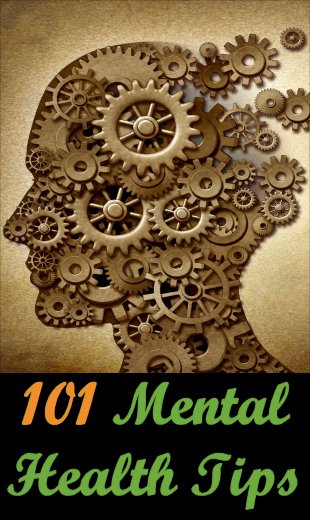Stendhal Syndrome – A Rare And Somewhat Controversial Condition
Have you ever listened to a piece of music and felt goosebumps, or a shiver down your spine?
Many people have, and it can happen when looking at works of art too.
It’s not that uncommon, but there are some people who have much more extreme reactions to art.
And it’s called Stendhal Syndrome.
This article explains what it is, its symptoms, and how to deal with it.
What Is Stendhal Syndrome?
This condition is psychosomatic in nature (i.e. it originates in the mind but also affects the body), and it manifests itself when some people observe or are exposed to great works of art.
It is named after the French author Henri-Marie Beyle, who is better known under his nom de plume of Stendhal (his most famous book is probably The Red And The Black).
According to the story, he was travelling in Italy in the early 19th century, looking for inspiration for his next book, and he was apparently astounded, when in Florence, by the sheer volume of art that was everywhere.
And when he was in the Basilica Of The Holy Cross, he experienced what has now become known as Stendhal Syndrome, named after him.
It is also sometimes referred to as Florence Syndrome too, partly because this is where Stendhal had his “attack”, and partly because there are those who say Florence is the only city where this syndrome is felt because of the massive amount of stunning art that is there.
Indeed, it often appears to affect tourists (who presumably are not familiar with the environment or local language and for whom the impact is therefore greater) – particularly people aged 20 – 40.
And if you’re looking for a more scientific-sounding name, then it’s also called hyperculturemia.
Either way, this is how Stendhal himself described what he felt:
“I was in a sort of ecstasy, from the idea of being in Florence, close to the great men whose tombs I had seen. Absorbed in the contemplation of sublime beauty … I reached the point where one encounters celestial sensations … Everything spoke so vividly to my soul. Ah, if I could only forget. I had palpitations of the heart, what in Berlin they call ‘nerves’. Life was drained from me. I walked with the fear of falling.“
Much later, in the 1970s, an Italian psychiatrist called Graziella Magherini studied one hundred similar cases, also in Florence, and he described it as a kind of “artistic embarrassment”.
Some have likened this to the reaction devotees have to deeply religious experiences, and it would appear that Stendhal was not the first person to feel this way when viewing a surfeit of art, even though he is considered to be Patient Zero.
And while it is usually the result of seeing art, it can also be the result of observing the beauty of nature.
Stendhal Syndrome Symptoms
So what are the symptoms of this unusual condition?
- Confusion
- Depression (*)
- Disorientation
- Dizziness (*)
- Emotional tension
- Epileptic fits
- Euphoria
- Exhaustion
- Fainting (*)
- Hallucinations
- Heart attack (*)
- Hot flashes
- Palpitations
- Panic attacks
- Sweating
- Tachycardia
- Terror
The symptoms identified by an asterisk typically only occur in extreme cases which, given that this syndrome is rare in the first place, means they are highly unusual.
The most recent known case was apparently an Italian man who suffered a fatal heart attack in 2018 while looking at The Birth Of Venus, by Botticelli.
Sceptics would point out that, when you consider how many thousands of people have seen this particular painting without feeling any ill effects, or dying, then that man was maybe just unlucky or suffering from other underlying symptoms.
In general though, this syndrome is experienced not when somebody views a single piece of great art, but when they are exposed to a lot of it in a short period of time – and a trip to Florence would certainly meet these criteria.
Those who have felt it sometimes describe it as having their breath taken away – almost literally, in some cases.
Treatment
Because Stendhal Syndrome is so unusual and rare, there is no standardized treatment – each case usually requires a personalized plan.
In many cases, it’s simply a case of letting the person rest and recuperate for a while, so if you feel overcome by too much beautiful art, you should probably go outside and have a sit down, and maybe drink a little water.
And usually, Stendhal Syndrome is self-limited and is not a precursor to other or more serious mental health problems.
Popular Culture
Rare as Stendhal Syndrome may be, it has made its way into at least a couple of creative works:
- The 1996 horror mystery thriller movie Stendhal Syndrome, which features a policewoman who suffers from this condition.
- The book Diary, by Chuck Palahniuk (who was the author of Fight Club), which is, as the name suggests, written in the format of a diary.
Conclusion
In spite of its well-documented history, there are still those who ponder whether it’s a myth (or histrionic display) or a real psychological disorder.
Since it appears to affect tourists more than others, some claim that the effect is nothing more than the result of being jet-lagged and/or excited, which is perhaps why it’s similar to other conditions such as Jerusalem Syndrome and Paris Syndrome
Having said that, there is substantial evidence that it is real, and it appears to have made its way into the fifth edition of the Diagnostic and Statistical Manual of Mental Disorders, which is the manual published by the American Psychiatric Association that covers all mental health disorders for both children and adults.
And there is no doubt that art (e.g. ballet books, films, paintings, music, opera, sculpture) can move us in powerful ways, so it doesn’t seem too unreasonable to suggest that some people might be moved enough to suffer mental and/or physical symptoms.
Additional Resources
These are suggestions for those who wish to delve deeper into any of the above:
- Diagnostic and Statistical Manual of Mental Disorders, 5th Edition: DSM-5
- Diary
- Stendhal Syndrome (Movie)
- The Red And The Black







